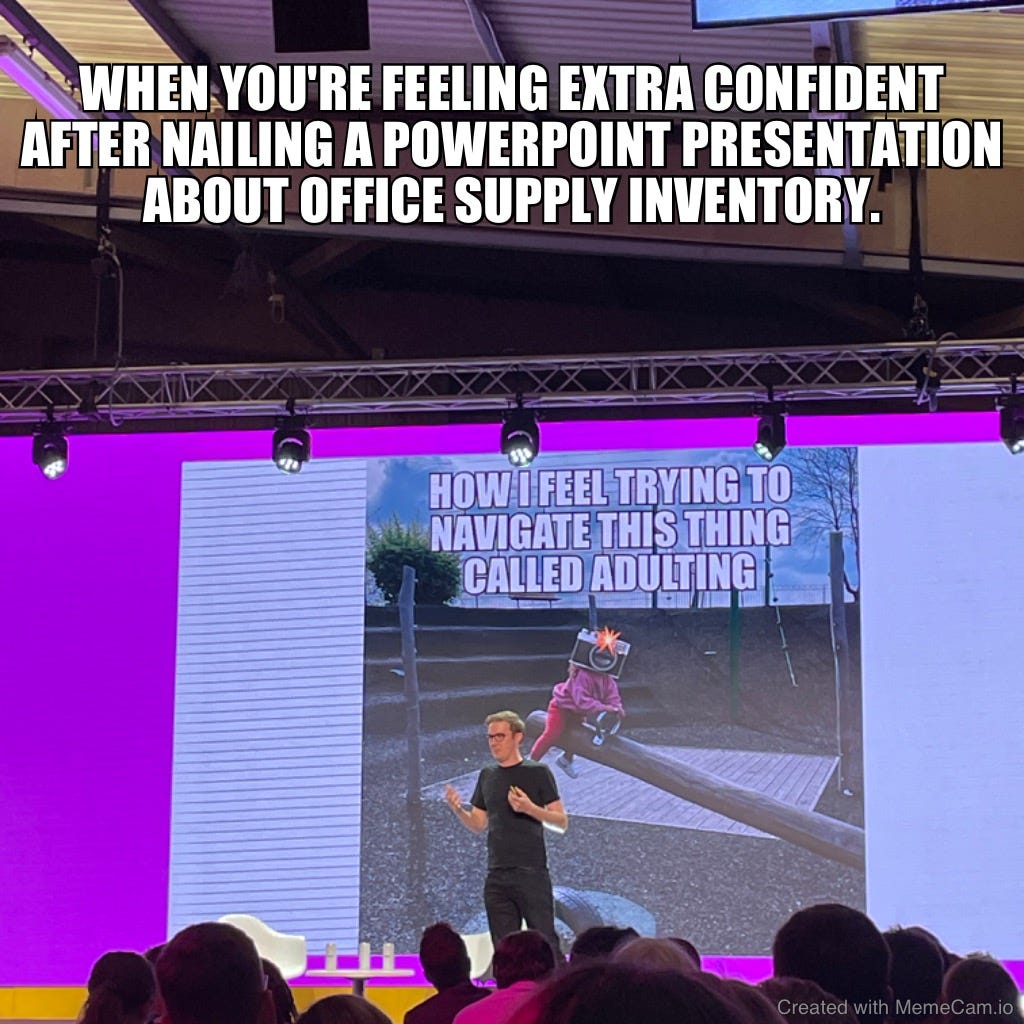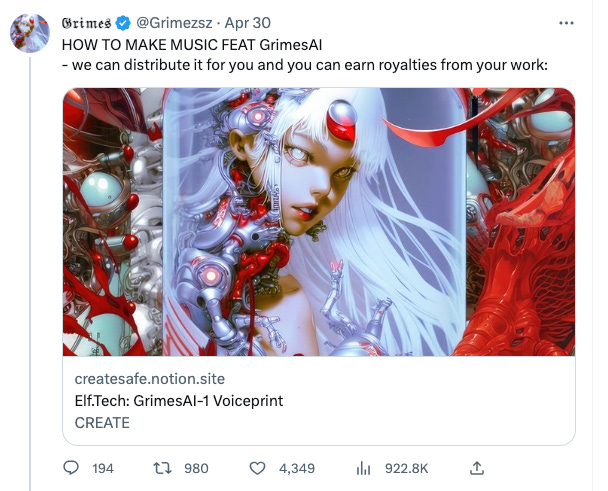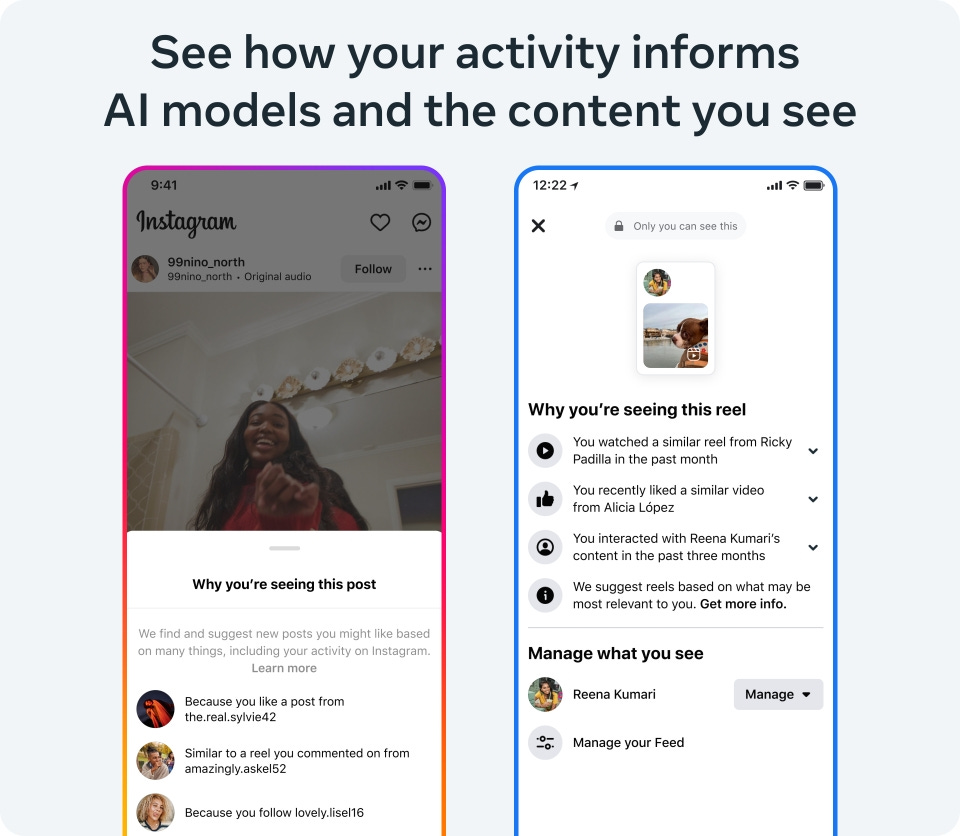Marketing x AI: 3 visions of the future normal
Non-boring ways to use AI to make marketing not just faster and cheaper, but better.
Last week I was giving a keynote at MAD//Fest, a marketing festival that could be described as the UK’s answer to SXSW (for the queues and the evening’s energy levels) or Cannes Lions (without the yachts and the rosé).
Just as at both of those events, the conversation was dominated by AI. Yes, by now we get that AI is going to make marketing even more data-driven and efficient.
The future of advertising (according to panel after panel, and indeed ChatGPT itself) is an infinite number of automated and hyper-personalised messages – placed, monitored, and relentlessly optimized by algorithms. It’s undoubtedly true. But it’s hardly inspiring, is it?
It feels as though we can do better than this. What if we could we use AI to make marketing itself better? Where are the non-obvious provocations about the future of marketing? Can we make it more fun? More inclusive? More transparent?
But first, here’s a very meta AI-created meme of me talking about AI-created memes, shared by one of the audience. Thanks for having me MAD//Fest!
Authorised celebrity deepfakes // Virgin Voyages’ Jen AI
💥 Future Now // Jennifer Lopez can now personally invite you (yes, you!) on a cruise. Well, a synthetic representation of the movie and music star at least. Jen AI (see what they did there…?! ;) is a clever campaign from Virgin Voyages where people can enter in someone’s name and the reason for the vacation, and receive a custom invitation from a digital deepfake of J-Lo.
💡 Future Normal // Remember DeepTomCruise? In early 2021, a series of fake-but-believable videos of the actor went viral on Tiktok. And while Jen AI isn’t the first authorized celebrity deepfake – Jack Nicklaus, the famous golfer who is now aged 83, has a 38-year-old ‘digital twin’ Digital Jack; NBA star Carmelo Anthony has his ‘Digital Melo’; Snapchat influencer Caryn Marjorie launched Caryn.ai as a virtual girlfriend service – it’s kind of amazing to me that this hasn’t been a bigger trend. Yet.
Because whatever you might think about the ethics of cloning oneself, the incentives are there. Caryn.ai reportedly has 20,000 virtual boyfriends paying her $1/ minute for her avatar’s company. For brands, digital celebrities are reliable – metaphorically turning up on time and saying exactly what they are asked to.
Of course, there will be risks. Personalisation is fun, but getting a celebrity deepfake to say or do something horrible to share on social will quickly become a new online sport (Jen AI is painfully limited in its customisation options). Deepfake safety officers will become a thing.
And the infinite and omnipresent nature of digital celebrity will open up some interesting new questions. Will this cause brands to get lazy, falling back on the same well-known celebrities even long after their ‘prime’ or even after their deaths? Another job for the future – the post-death image rights negotiator?
Crowd-powered creativity // Grimes’ Elf.Tech
💥 Future Now // After a supposed collaboration between Drake and The Weekend went viral on Tiktok, Universal Music rushed to get the AI-generated track removed from streaming services. However the artist Grimes responded very differently. In May, she launched Elf.tech, a platform that allows people to create songs featuring an AI-created version of her voice. Most interestingly, she has promised to share 50% of the royalties with creators who release songs using her AI-generated voice.
💡 Future Normal // No one wants unauthorised deepfakes to flood their feeds. Yet AI offers artists as many opportunities as it does threats. A decade ago Lady Gaga was one of the first artists to use social media to create a deeply engaged fan community, her ‘Little Monsters’ (a move that everyone from Taylor Swift, BTS and Harry Styles has now mimicked).
In the AI era, these two-way relationships will be taken to another level, when everyone can now remix and reimagine anything they want? Not, not everyone will want to (and even with the best generative AI imaginable most fan creations will be terrible, or involve penis jokes). But, just as on YouTube and Tiktok, there will be some incredible talent discovered within the near-infinite stream that generative AI unleashes. Indeed it’s not hard to imagine artists like Grimes actively collaborating with certain fans to launch songs together, with near equal billing.
Clearly brands aren’t musicians. Just as in the social era, we don’t need toothpaste makers to ‘join the conversation’ (unless it’s around improving dental health). But Coke’s 'Create Real Magic’ won’t be the first crowd-powered campaign to use generative AI, that’s one thing you don’t need to ask ChatGTPT.
Transparent AI: Meta explains its AI
💥 Future Now // Facebook, or Meta as it is now, has long used opaque algorithms to put just the right content in front of you – if by ‘right’ you mean ‘just addictive enough to keep you mindlessly scrolling.’ 😬 However, spotting that this new era of AI might offer it an opportunity to rehabilitate its Metaverse-stained brand, Meta is leaning into what it calls its “wider ethos of openness, transparency, and accountability” (!) – with new features that explain to people why its AI has suggested a specific post in their Facebook or Instagram feeds.
💡 Future Normal // You probably don’t need an AI to detect my note of skepticism towards this. Facebook and Instagram are weapons of mass distraction, and it’s unlikely that this will register on many of the 3 billion people who use its apps each day, and even less likely that this will encourage Meta to prioritise social value over raw engagement.
However, it does highlight an interesting space for marketers and brands to explore. In a world of algorithmic advertising, there will be opportunities to be transparent and explain to people why their personalised ad looks like it does (or why it looks different to their partner’s / colleague’s / friend’s etc. The ability to peek behind the AI curtain is empowering given all the well-known issues with bias and discrimination, even if it’s not clear yet how much tangible information users can really see.
The optimist in me would love to see this being used to encourage positive behaviour change – “do X and it will change the ad to look like this”. This could be done on an individual or even a collective basis. Like the famous nudges in hotels (those notes telling you that 80% of guests keep their towels), imagine dynamic ads where the creative could respond to and even reward people’s activity.
What Is The Future Normal For Your Business?
My new book, The Future Normal: How We Will Live, Work & Thrive In The Next Decade, explores 30 trends, from continuous glucose monitoring to job sharing.
I also give inspiring, actionable presentations that help your team spot and seize emerging opportunities. Clients like them:
“Henry's approach was radically simple but highly practical - instead of being overwhelmed by the pace of change, you leave with a clear way to identify and seize the opportunities AI will present in the months ahead.”
Get in touch if you'd like to discuss an upcoming event or project.
Or, sit back and enjoy the keynote that myself & Rohit Bhargava gave at SXSW to launch the book:
Thanks for reading,









